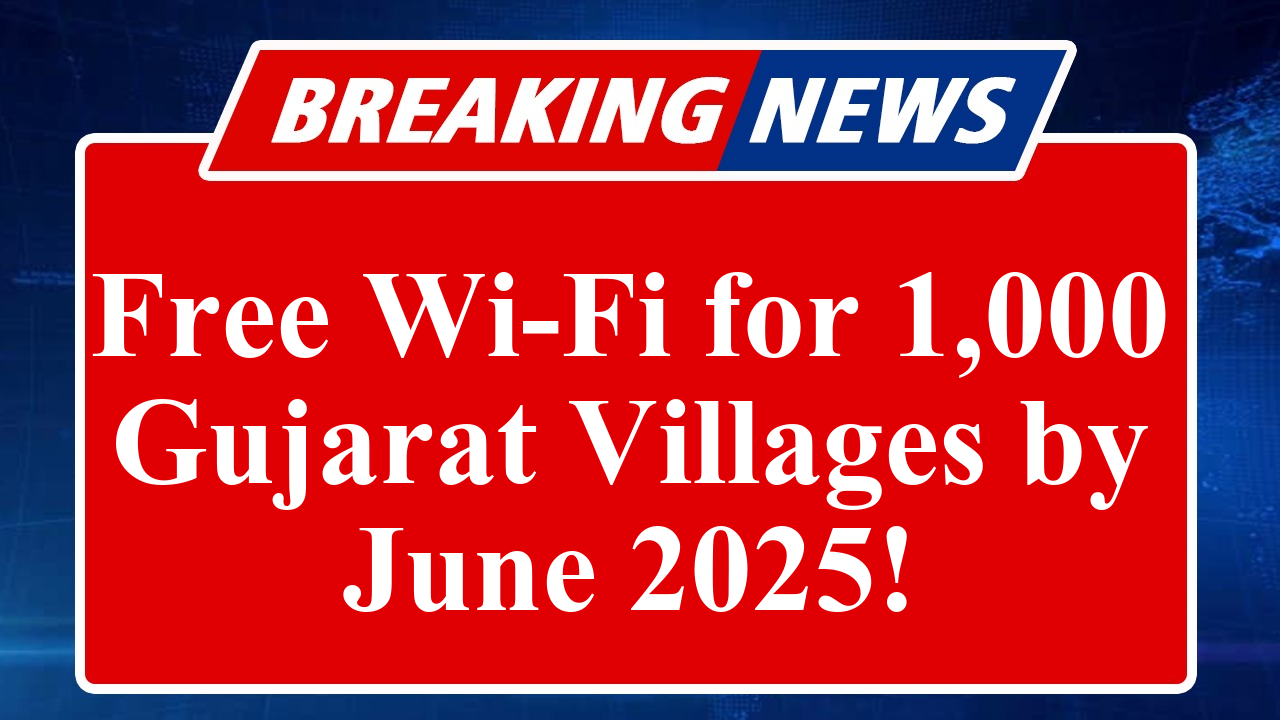Gujarat’s ambitious Digital Village initiative aims to provide free Wi-Fi to 1,000 panchayats by June 2025, boosting rural connectivity. Under the BharatNet project, high-speed internet will empower villagers with access to e-governance, education, and healthcare services. The state-led model, with Gujarat Fibre Grid Network Limited, targets 98% uptime, bridging the digital divide and fostering innovation.
Gujarat Pioneers Rural Connectivity with Free Wi-Fi in 1,000 Panchayats
In a transformative push for rural digital empowerment, the Gujarat government has announced plans to provide free Wi-Fi access to 1,000 village panchayats by June 26, 2025, under its Digital Village initiative. This ambitious project, aligned with the central government’s BharatNet Programme, aims to bridge the digital divide by ensuring high-speed internet connectivity in rural Gujarat, fostering access to essential services like e-governance, tele-education, and tele-medicine.
The initiative builds on the state’s ongoing efforts to enhance digital infrastructure. As of June 2024, over 216,000 gram panchayats across India, including 14,654 in Gujarat, have been equipped with internet access under BharatNet. Gujarat’s state-led model, implemented through the Gujarat Fibre Grid Network Limited (GFGNL), sets a target of over 98% service uptime, ensuring reliable connectivity even in remote areas. A quadripartite agreement signed on June 24, 2025, between the central government’s Digital Bharat Nidhi, the Gujarat government, Bharat Sanchar Nigam Limited (BSNL), and GFGNL marks Gujarat as the first state to adopt this approach.
The Digital Village initiative will provide free Wi-Fi for the first hour of usage daily, with affordable rates for additional access. This builds on a previous trial in Gujarat, where the free Wi-Fi time limit was increased from 30 minutes to one hour in 8,000 panchayats in October 2024. The expansion to 1,000 additional panchayats by mid-2025 aims to cover underserved areas, enabling villagers to access online services such as DigiLocker for certificates, tele-medicine for healthcare, and digital platforms for education and skill development.
The project is expected to revolutionize rural life by improving access to real-time governance, digital entrepreneurship, and financial inclusion. For instance, farmers can benefit from online market linkages, while students gain access to e-learning resources. The initiative also supports rural startups and fintech services by extending connectivity to mobile towers, field offices, and households, with a minimum download speed of 25 Mbps per Fiber-to-the-Home user.
Gujarat’s efforts align with the broader BharatNet goal of connecting 2.64 lakh gram panchayats and 3.8 lakh non-gram panchayat villages across India. The state has received in-principle approval for Rs 5,631 crore to support capital expenditure and a decade of maintenance. However, challenges remain, as past reports have highlighted issues like inadequate infrastructure maintenance and uneven progress in BharatNet’s implementation. Despite these hurdles, Gujarat’s proactive approach positions it as a leader in rural digital transformation.
By empowering village-level entrepreneurs and Common Service Centres (CSCs) to manage bandwidth, the initiative ensures sustainable service delivery. Villagers will no longer need to travel to urban areas for services like affidavits or certificates, as local Talati-cum-secretaries will be authorized to provide these digitally. This move not only saves time but also reduces costs for rural residents, making governance more accessible.
Disclaimer: This article is based on reports from credible sources, including government announcements, news outlets like The Hindu, Economic Times, and DeshGujarat, and official BharatNet updates. Information is accurate as of July 6, 2025, but may be subject to change. Readers are advised to verify details through official channels.

